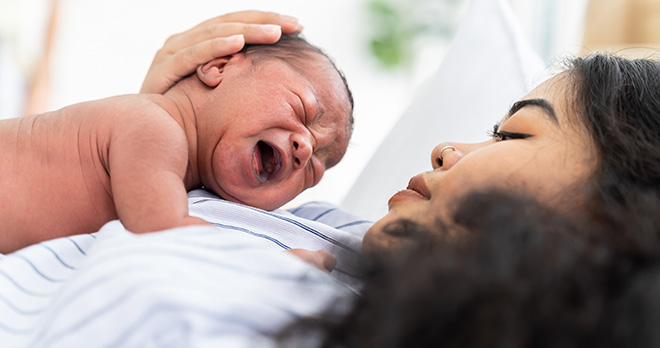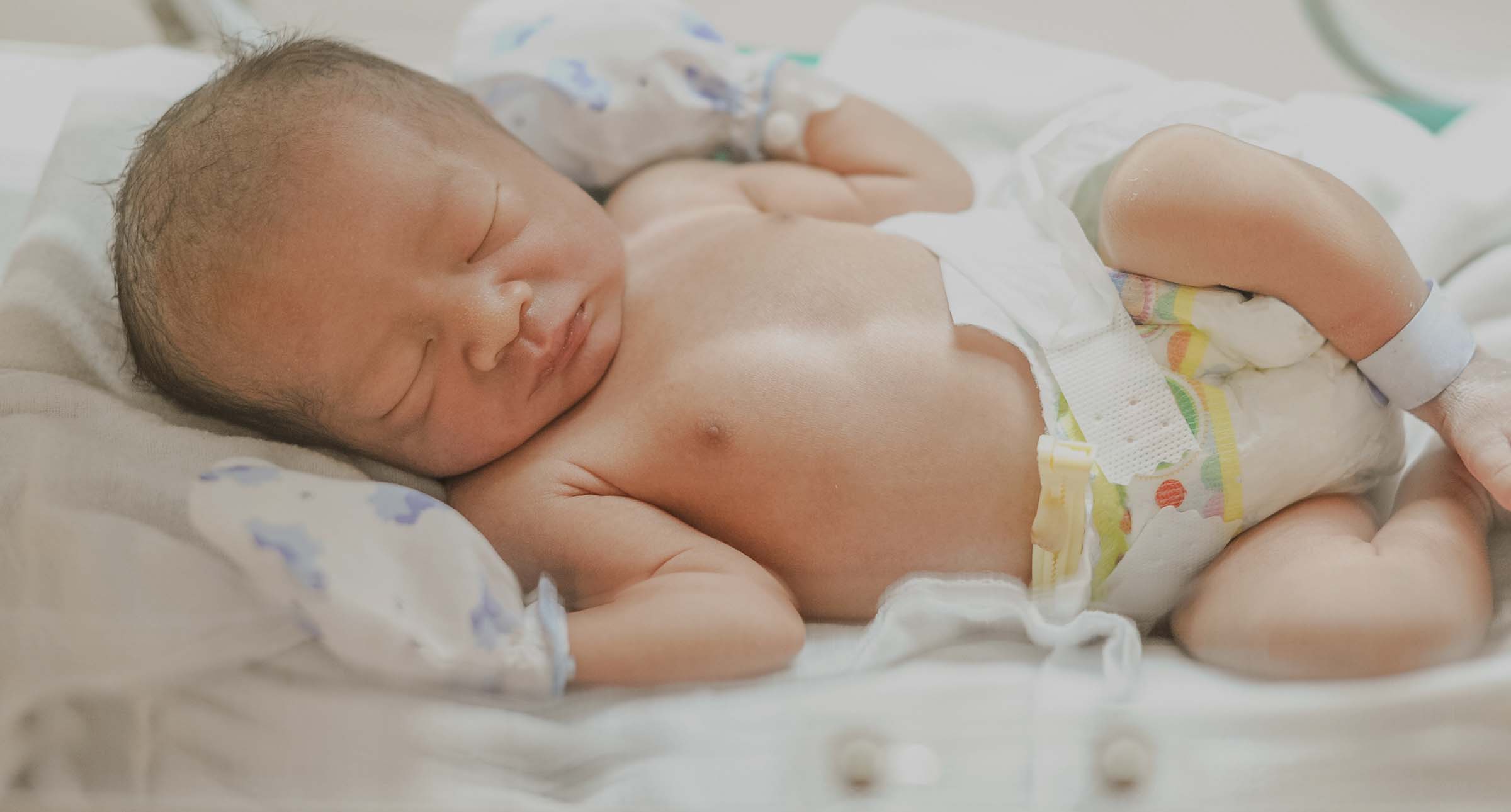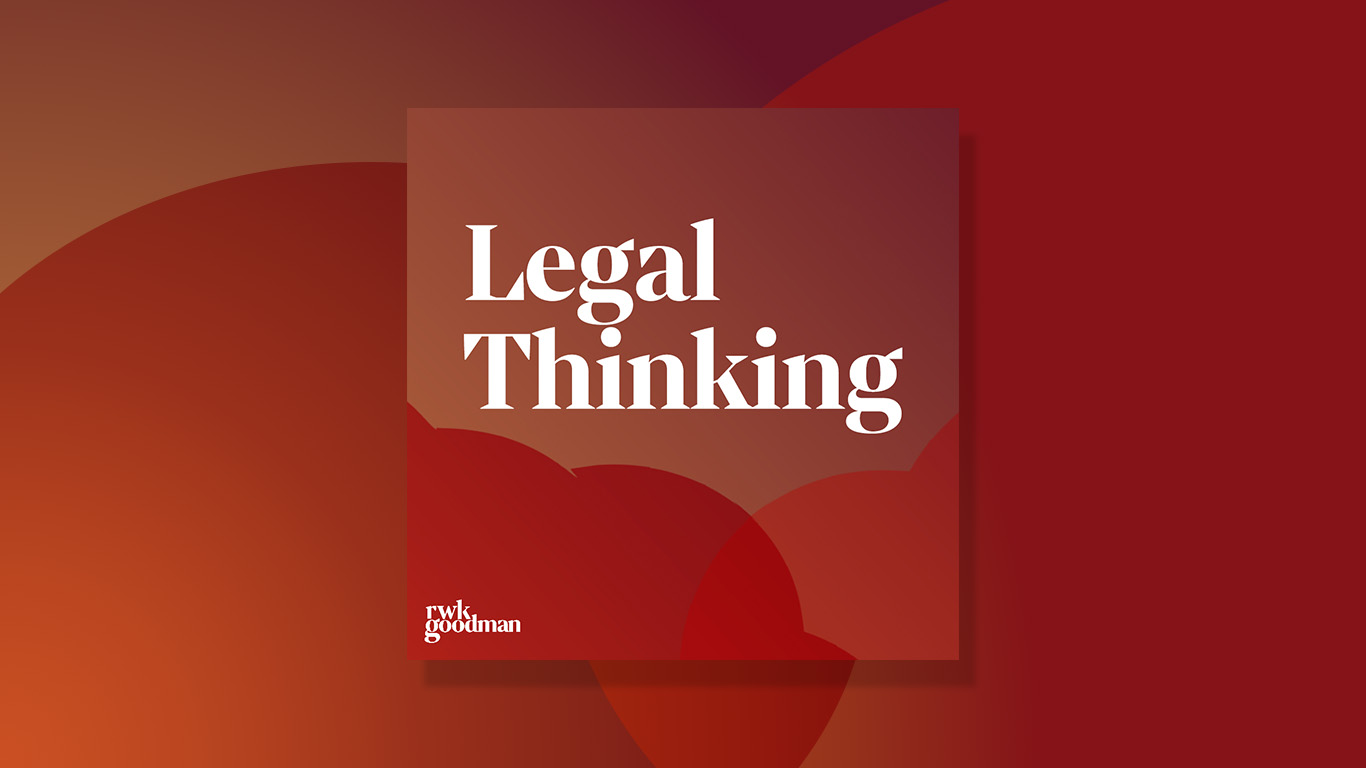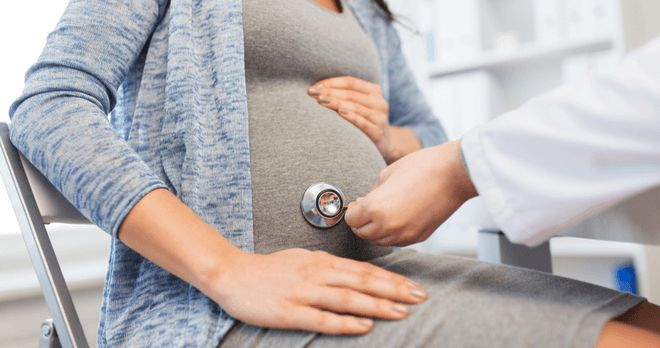What is Ogilvie syndrome? Symptoms, diagnosis, treatment and more, explained.

Ogilvie is a rare but serious post-surgical complication that can occur after caesarean section. It is a sudden acute dilation of the colon which obstructs the flow of intestinal content and rapidly progresses to marked dilation of the caecum (the beginning of the large intestine). It is a medical emergency and must be treated as such.
What causes Ogilvie syndrome?
The cause of Ogilvie syndrome following caesarean section is unknown.
What are the symptoms of Ogilvie syndrome following caesarean section?
Early recognition of Ogilvie syndrome following caesarean section is essential to avoid bowel perforation.
Symptoms occur in the first 72 hours after delivery and include;
- abdominal distension, i.e. where the abdomen is visibly and abnormally swollen;
- impaired bowel function;
- abdominal pain.
The majority of perforations occur by the fifth postoperative day. It is therefore important that the symptoms are recognised early to avoid perforation occurring.
How is Ogilvie Syndrome diagnosed?
Diagnosis of Olgivie Syndrome is by radiography and CT scan.
If the caecal diameter is greater than 10m on radiograph this is indicative of a significant risk of impending perforation and a CT scan is required to confirm diagnosis.
What treatment is available for Ogilvie Syndrome?
Initial treatment includes:
- no oral intake;
- nasogastric decompression, where a tube is placed to your stomach via your nose to remove its contents;
- correction of fluid and electrolyte disorders, usually intravenously;
- reduction or discontinuation of drugs that inhibit gastrointestinal mortality (eg, stopping painkillers such as opiates);
- treatment of any infection with antibiotics;
- if caecal dilatation is significant urgent colonoscopy to decompress the colon is required to avoid perforation.
Can you sue after developing Ogilvie syndrome?
Yes, there can be circumstances where substandard care in the treatment of Ogilvie syndrome has caused an injury.
As maternal birth injury solicitors, the cases we see tend to arise because there has been a failure to diagnose Ogilvie syndrome following caesarean section and therefore a delay or failure to treat the condition.
We have helped clients who have suffered from ogilvie syndrome and didn’t receive the correct treatment and some of our client stories are set out below:
Example one
Our client had her second baby via caesarean section. Following the delivery, she felt something was not right. Her stomach was severely bloated, and she suspected her bowel was in ileus but she was repeatedly told everything was normal. The following day an x-ray was performed because she was vomiting, and her symptoms were getting progressively worse. The x-ray showed faeces in the colon. Despite this, she was discharged.
Later that evening, our client suffered severe pain in her stomach. She attended A&E and a CT scan was performed. The scan revealed that her bowel had ruptured and she underwent emergency surgery. She was told that her caecum had burst and that it had been necessary to remove a substantial section of her colon. She had two colostomies in place, but was told they were reversible.
Our client’s injury affects most of my daily life, something as simple as eating onions or leeks causes her to bloat and causes severe pain, which triggers memories of her bowel rupturing and the surgery she underwent. Her toileting habits have changed. She needs to be near a toilet as when she need to pass faeces, she has to go immediately. Our client has experienced episodes of incontinence.
What has happened has also affected her decision to have further children. Our client has been told that there is a risk of Ogilvie Syndrome happening again, and it is a risk that she and her husband are not prepared to take.
Example two
Following the birth of her baby via c-section, our client was struggling with symptoms of excessive vomiting, diarrhoea, and stomach pains. A radiograph was undertaken and indicated a significant risk of Ogilvie’s syndrome but no further tests were carried out.
The symptoms continued for a further three days until our client was finally offered a CT scan. The scan revealed that she had in fact suffered a bowel perforation and she underwent emergency surgery for faecal peritonitis. Our client was fitted with a ileostomy bag for 10 weeks. Her recovery was further complicated as the surgical wounds became infected.
Our client was understandable very traumatised by the experience and experienced a period of depression which impacted her ability to bond with her new-born baby.
Example three
Following a planned c-section, our client experienced significantly high blood pressure coupled with little to no bowel movement.
The following day, she was given oral morphine to alleviate the severe stomach and lower back pain she was experiencing.
Two days passed and, whilst she was able to pass urine, she continued to struggle with little to no bowel movement. An abdominal x-ray displayed signs of paralytic ileus for which she was prescribed glycerine suppositories, which had no effect.
Bloods were taken and our client was informed she had an infection.
After repeated requests for an abdominal scan, our client was finally assessed where it became apparent that her bowel had perforated. She underwent a laparotomy resulting in the removal of her appendix. Thankfully, the operation was a success and she did not need a colostomy.
However, the trauma of the experience impacted on our client not only physically but psychologically. She began experiencing psychotic episodes and subsequently made an attempt to take her own life. Her husband has to leave his job to provide the round-the-clock care that she and their newborn baby needed.
If Ogilvie’s syndrome has left you with permanent injuries, knowing it could have been prevented is hard. We can help you to seek the compensation you deserve.
Call now








